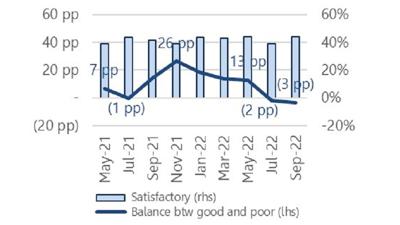
The world economy is facing turbulent times. Being globally connected this also impacts the textile industry. During the last 2 years our industry has been through different crises – caused by the Covid pandemic – starting a recovery, and now as a result of the war in the Ukraine, energy price peak, inflationary pressures and a decrease in consumer confidence. We asked different stakeholders in our industry the question: “What are the 5 biggest challenges in the textile industry for 2023?” In his statement of Dr. Christian Schindler, Director General of International Textile Manufacturers Federation (ITMF), Zurich/Switzerland, gives us his assessment:
Demand
In the short run, weakening demand is the largest concern. The textile pipeline is full of products – from yarns to garments. Retailers/brands are delaying and/or deferring orders at the moment. The uncertainty about the duration of high inflation rates and the scale of the slow-down/recession of major economies is a drag on demand and orders.
Energy
High energy prices are of course an enormous burden for the industry. Only in those countries where governments provided financial support to companies and consumers are the negative impact of soaring energy prices softened. With the Russian invasion of Ukraine, it is unclear whether energy prices will fall to more bearable levels any time soon.
Supply chain problems
While the peak of supply chain problems has been passed over the summer months, in some cases companies are still struggling with delays, especially when they are sourcing from the Far East, especially China. The zero-Covid policy and the possible lockdowns of production centres and harbours in China remain a threat in the coming weeks/months.
Sustainability & climate change
Climate change has become an obvious threat around the world. Hence, enormous sustainability efforts are necessary. Regulators around the world are working on new requirements with regard to carbon footprint reductions, increasing recycling ratios, or reducing water and chemical use. To comply with all these requirements is a mammoth task both in terms of complexity and speed.
Skill shortage
In the last several years skill shortage was already a problem, not only in Europe but around the world. The industry is struggling to attract workers and talents. The reputation of the industry needs to improve. The necessity to digitalize the industry and to introduce sustainability measures is both a challenge and opportunity to attract more talent.
Traceability
New technological innovations allow for more and less expensive traceability. Both digital and physical traceability tools and combined processes provide the supply chain with new options to trace raw material and products. With legislation asking for more accountability from retailers/brands, it is indispensable that the industry applies these new technologies.



